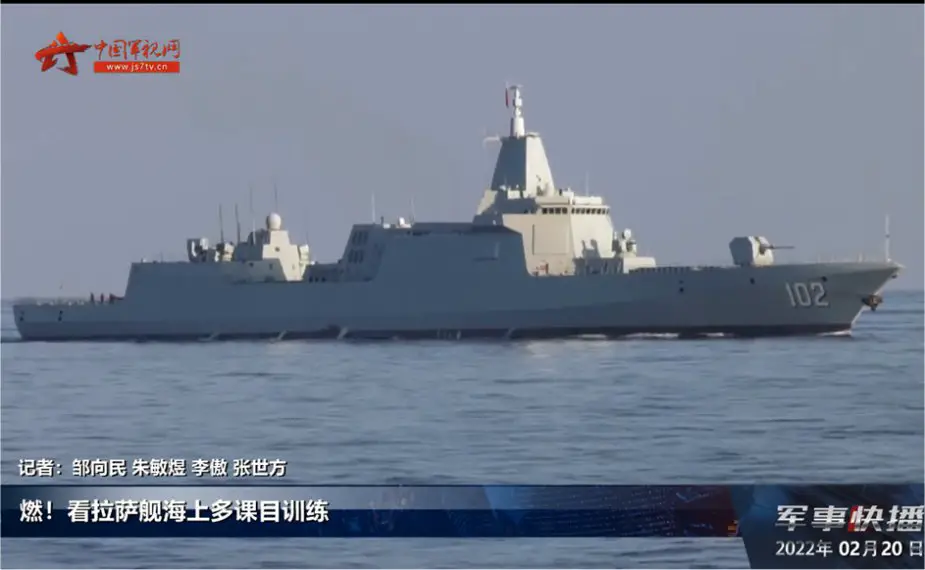Breaking news
Chinese Navy's Type 055 destroyer Lhasa conducts drills in Sea of Japan.
According to information published by the Global Times on June 17, 2022, China's second Type 055 large destroyer, the Lhasa, is reportedly holding its first far sea drills by entering the Sea of Japan.
Follow Navy Recognition on Google News at this link
 Chinese Type 055 destroyer Lhasa (Picture source: Chinese TV)
Chinese Type 055 destroyer Lhasa (Picture source: Chinese TV)
Japan's Maritime Self-Defense Force on Monday spotted a Chinese People's Liberation Army (PLA) flotilla consisting of three ships - the Lhasa, the Type 052D destroyer Chengdu and the Type 903 replenishment ship Dongpinghu - as they sailed through the Tsushima Strait from southwest to northeast toward the Sea of Japan, Japan's Ministry of Defense Joint Staff said in a press release late.
This was the first time Lhasa has embarked on a far sea voyage since its commissioning into the PLA Navy in March 2021. Since the start of 2022, the ship has conducted a number of realistic combat scenario exercises in the Yellow Sea, with experts saying then that it was preparing for more important operations soon to come.
The latest voyage indicates that the Lhasa has reached 100 percent operational capability, and it can carry out military missions in the far sea as the core of a flotilla.
About Type 055 destroyer Lhasa
Lhasa (102) is a Type 055 destroyer of the People's Liberation Army Navy. She was the second ship of the class and was laid down and launched on 28 April 2018 at the Jiangnan Shipyard in Shanghai.
The ship has a length of 180 m (590 ft 7 in), a beam of 20 m (65 ft 7 in), and a draught of 6.6 m (21 ft 8 in). She can reach a top speed of 30 knots (56 km/h; 35 mph).
Having a displacement of more than 12,000 tons, Type 055 is equipped with 112 vertical launch missile cells capable of launching a combination of surface-to-air missiles, anti-ship missiles, land-attack missiles, and anti-submarine missiles.
Propulsive power is generated by four 28 MW QC-280 gas turbines in combined gas and gas arrangement. Additional power may be provided by six 5 MW QD-50 gas turbines. The maximum speed is estimated to be 30 knots.


























